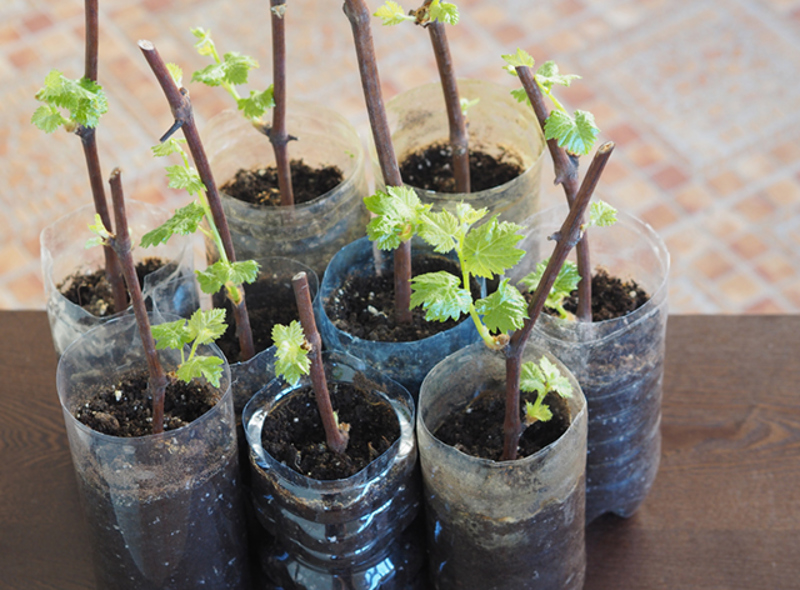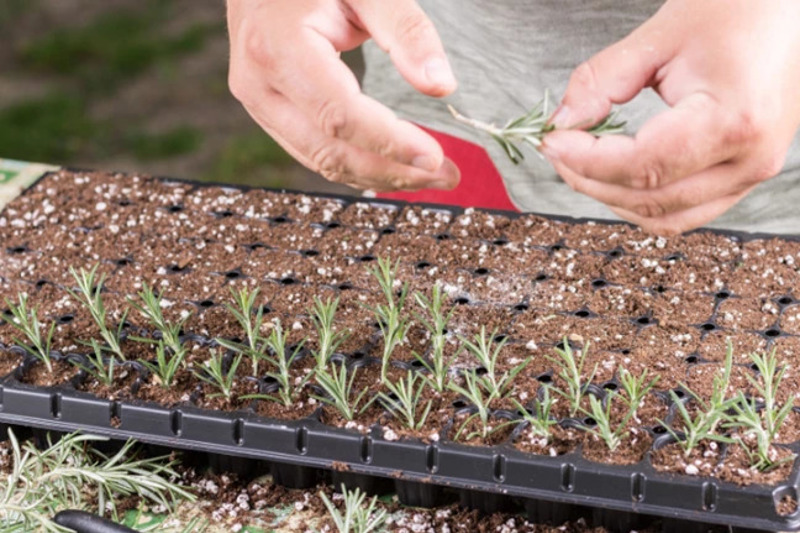Yates Account
Join now
Create a Yates account today!
Sign up to join the Yates Garden Club for monthly e-mails packed with seasonal inspiration, tips for success & exclusive promotions.
Plus if you’re a Garden Club member you can take part in the Yates Growing Community - a blog to share successes, get advice & win prizes in fun challenges along the way!

Forgot password
Enter the email address associated with your account, and we'll email you a new password.

Do you have a favourite deciduous shrub or vine at home (or at a friend’s) that you’d like to clone? Well, this winter, try your hand at taking some ‘hardwood’ cuttings. It’s easier than you think!
Hardwood cuttings are snipped from plants during their leafless winter phase, then encouraged to grow their own roots.
Suitable plants for hardwood cuttings include Grape vines, Kiwifruit, Blueberries, Raspberry, Blackcurrants, Figs, Quinces, Pomegranates, Hydrangeas, Roses, Rhododendrons, Viburnum, Hebes, Camellia, Bougainvillea and Wisteria. Don't be scared to experiment either, it's a low-cost exercise so it's not a disaster if cuttings don't survive!
Here's a step-by-step guide to growing new plants from Hardwood cuttings:
- Timing: take cuttings from late autumn (immediately after leaf drop), through to early spring (just before bud burst).
- Choose leafless stems around 0.75–1 cm thick; cut off 15–18cm long sections using sharp, clean secateurs.
- The top cut should be just above a node (the joint where the new leaves sprout from the stem) and the bottom cut just below a node.
- Make a slanted cut at the top so you can remember which way is up.
- Dip the bottom ends of the cuttings into Yates Clonex Red Rooting Hormone Gel. Yates Clonex Red contains a concentrated plant hormone that accelerates root development, as well as helping to seal and protect the cutting.
- Insert the dipped ends of the cuttings into small pots or trays filled with Yates Black Magic Seed Raising Mix, burying about two-thirds of the cutting into the mix.
- Place pots or trays in a cool, sheltered, well-lit position.
- To help protect the cuttings and retain moisture, place a plastic bag over the pots, supported by some chopsticks or skewers. This creates an ideal environment to protect cuttings until they form roots in a few months’ time.
- Once roots are well established and new leaves have started to develop, individual cuttings can be transplanted into slightly larger pots to grow until they’re big enough to be planted out into their long-term home. After a bit of patience, they'll usually be ready to plant out the following autumn.

Softwood and Semi-hardwood cuttings
Do you have plants that aren't deciduous, or they keep their leaves through winter? Never fear, many plants are suited to alternative types of cuttings, taken at appropriate times of the year.
'Softwood' cuttings are taken from tender new leafy growth, whereas 'semi-hardwood' cuttings are taken from stems that have partly matured.
Here's a quick guide to some popular plants that are suitable for cuttings and when to take them:
- For winter flowering shrubs, like camellias and daphne, take semi-hardwood cuttings in early summer.
- For spring flowering shrubs, like azaleas, viburnum, hibiscus, gardenia, and weigela, take semi-hardwood cuttings in late spring and early summer. Take Buxus cuttings using the same method.
- For perennials like salvias, daisies, penstemons, fuchsias, pelargoniums, and asters, take softwood cuttings in late spring, using the new spring growth stems. Treat rosemary cuttings in the same way. Lavender can also be propagated using softwood cuttings, taken after the flower flush.

How to take Softwood and Semi-hardwood cuttings:
- Take 10cm long cuttings, removing all but the top few leaves. Make the cut just below a node (the joint where the new leaves sprout from the stem).
- Dip the stem ends into Yates Clonex Purple Rooting Hormone Gel and insert into small pots or trays of Yates Black Magic Seed Raising Mix.
- Keep moist in a bright, protected spot until roots form.
- Once the roots are established, they can be transplanted into slightly larger pots to mature before planting out into their final home.
















Share
Share this article on social media